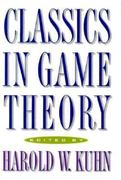There is also graph that I need to do but I know how to make the graph but can someone solve and explain this for me please
X 4. Maximizing consumer and producer surplus The following table shows the value of taking a piano lesson for five students, and the opportunity cost of teaching a piano lesson for five instructors. Each instructor can teach only one student, and each student can take only one lesson. A- Value of a Lesson (Willingness to Pay) Opportunity Cost (Value of Best Alternative) Student (Dollars) Instructor (Dollars) Charles 72 Beth 56 Dina 64 Andrew 40 Gilberto 56 Teresa 32 Juanita 40 Sam 16 Lorenzo 32 Neha 8 If prices are negotiated directly between instructor and student, it is _ possible for all five students to have lessons, and for all students and all instructors to be better off than they would have been otherwise. In this case, the total net benefit (sum of both consumer and producer surplus) must be $136 On the following graph, use the blue points (circle symbol) to plot the demand for piano lessons. Then, using the orange points (square symbol), plot the supply of piano lessons. Hint: Plot each curve as a step function, so that the total number of people willing to buy or sell lessons at each price is shown accurately. The first point on your demand curve should be (0, $72), while the second point should be (1, $72). The last point on the demand curve should be (5, $0). Similarly, the first point on your supply curve should be (0, $8), while the second point should be (1, $8). The last point on the supply curve should be (5, $80).X If there is one price in this market, and it is set by supply and demand, that price will be $40 V , and total surplus (consumer and producer surplus combined) will be Suppose a price ceiling of $20 is enacted in this market. Which of the following mutually beneficial (that is, beneficial to both the buyer and the seller) trades that occurs before the price ceiling is imposed would not occur afterward? Teresa gives Gilberto a piano lesson. Beth gives Juanita a piano lesson. Sam gives Dina a piano lesson. Neha gives Charles a piano lesson. Based on the preceding parts of this question, you can conclude that having a single, market-determined price results in which of the following? Check all that apply. Some consumers going without a good, even though it would be possible for every consumer to buy the good and still ensure that all consumers and producers have positive surplus An efficient allocation of resources The highest possible total surplus Production of as much of the good as the economy can possibly produce Grade It Now Save & Continue Continue without saving








